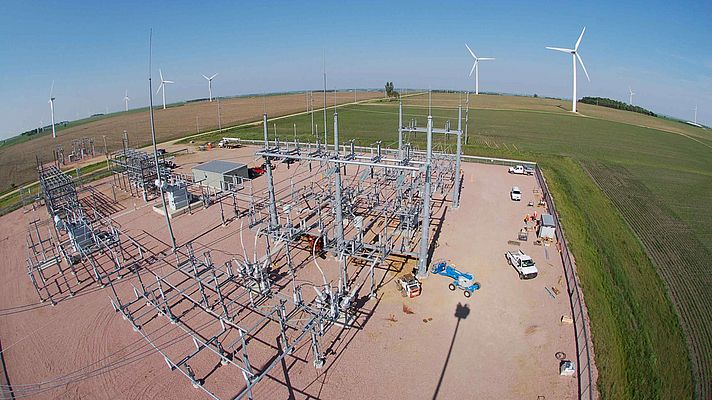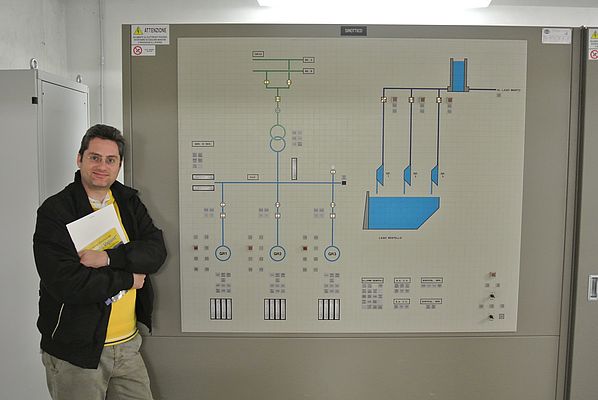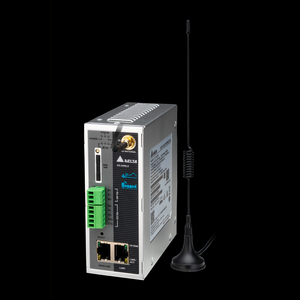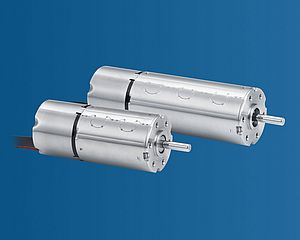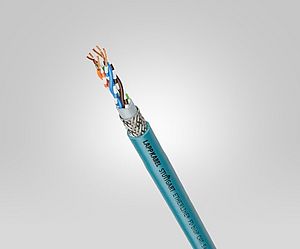During the past six years, the development of distributed generation in Italy has received an important impulse under the driver of incentives.
This kind of production is generally renewable, and it is connected to MV and LV networks. It is appointed that this plants have zero fuel cost and they are generally located near the loads, so their costs are determined by management and maintenance.
Efficiency can be defined as using less energy for having the same result, but it can be also defined the usage of a given equipment in different manner with the same result and the same effect. If you are using a locally generated energy, it is intuitive that you decrease the network losses. That is what we will investigate in this article.
Indeed, if inside a consumer plant you have connected a production plant (typically photovoltaic), then your load is fed by two different generators in parallel: the network and the distributed generation. When you absorb power from local generator, the network is unloaded and the losses decrease due to the Ohmic rule RI2 (the most important losses in transmission and distribution networks, because other kind of losses like corona discharge can be here neglected and otherwise it is independent from the load since it is proportionally to the voltage).
From this point of view, it seems that everything can work without problems. Nonetheless, what happens if you do not absorb the local generated power? Actually, the answer depends on network topology. Our purpose is therefore to look for a reasonable answer to this question.
The implied hypothesis is that production plant has zero fuel cost or more generally the energy produced by the consumer is cheaper than the energy absorbed from the network; considering the plants sizes and different development degree of the various applied technologies, this hypothesis can be considered true only if boosted by incentives: the grid parity is very difficult to reach and it can be achieved only for particular plants and situations.
It is intuitive that when the energy absorbed from network is cheaper than the energy locally produced, there is no advantage and the dispersed generation plant shall shoot down.
Referring to the aforementioned question we can imagine a long line with a production plant at its end and without loads: since the distribution network operates in radial configuration at its end the voltage rise and it is not infrequent the trip of overvoltage protection.
In fact, according to standards and state of the art technique in the production plants you always find the overvoltage, undervoltage, overfrequency and underfrequency protections for keeping safe the generators (especially in case of rotating machines).
This problem can be solved managing the reactive power of power plant, but starting from now the dispersed generation is not allowed working with power factor different from one.
If the network topology is different, then another local consumer can use the produced power thus unloading the network and lowering losses. Changing the network topology is very expensive today and technically difficult to implement.
Actually, what does it mean improving the efficiency of distribution networks? Using the networks in a different way for decreasing losses has improved the efficiency but when your goal is increasing global benefits, then the energy must be used by local consumer; this strategy requires a change in the mindset of the Distribution System Operator and it shall begin to make dispatching in the distribution networks. In Italy, the dispatch through distribution networks is still only idea. In August 2013, the local authority AEEGSI (Authority for Electric Power, Gas and Water System) has released a document (to solely consultation purpose) where three models for dispatching the production in the distribution networks have been described.
The smart grids are the perfect answer to these problems and in my opinion they are closer than people believe. In fact, every DSO has a remote control room for each zone. In this room, it's not difficult implementing the dispatch through distribution networks, as in today's computers these operations can be easily implemented.
The real, concrete problem rises when facing the communication infrastructure needed for the connection between the DSO and the producers. We do not have enough room to investigate the entire AEEGSI document but I'm convinced the third amongst the three proposed models is the right one to be followed. The most important thing in the "new" use of distribution network is promoting a wide mindset change, as it has been done for every kind of intervention pursuing energy saving so far. If the system shall be able to successfully integrate this new paradigm, then we all can receive large benefits. Smart grids can therefore be a definitive driver for new development all across Europe.
By Alberto Zotto, Owner at Studio Zotto, Italy


